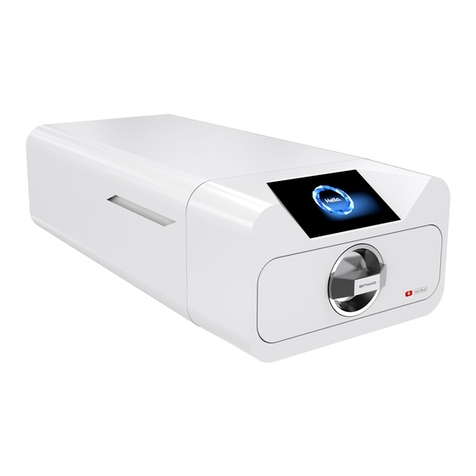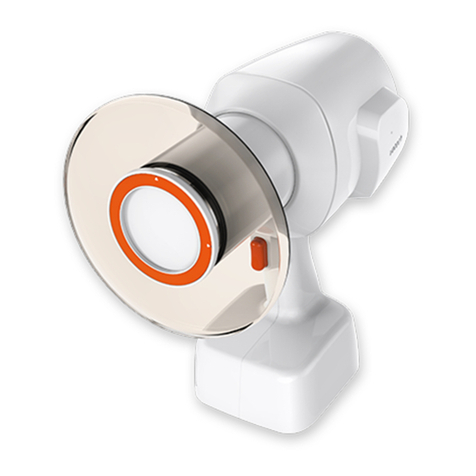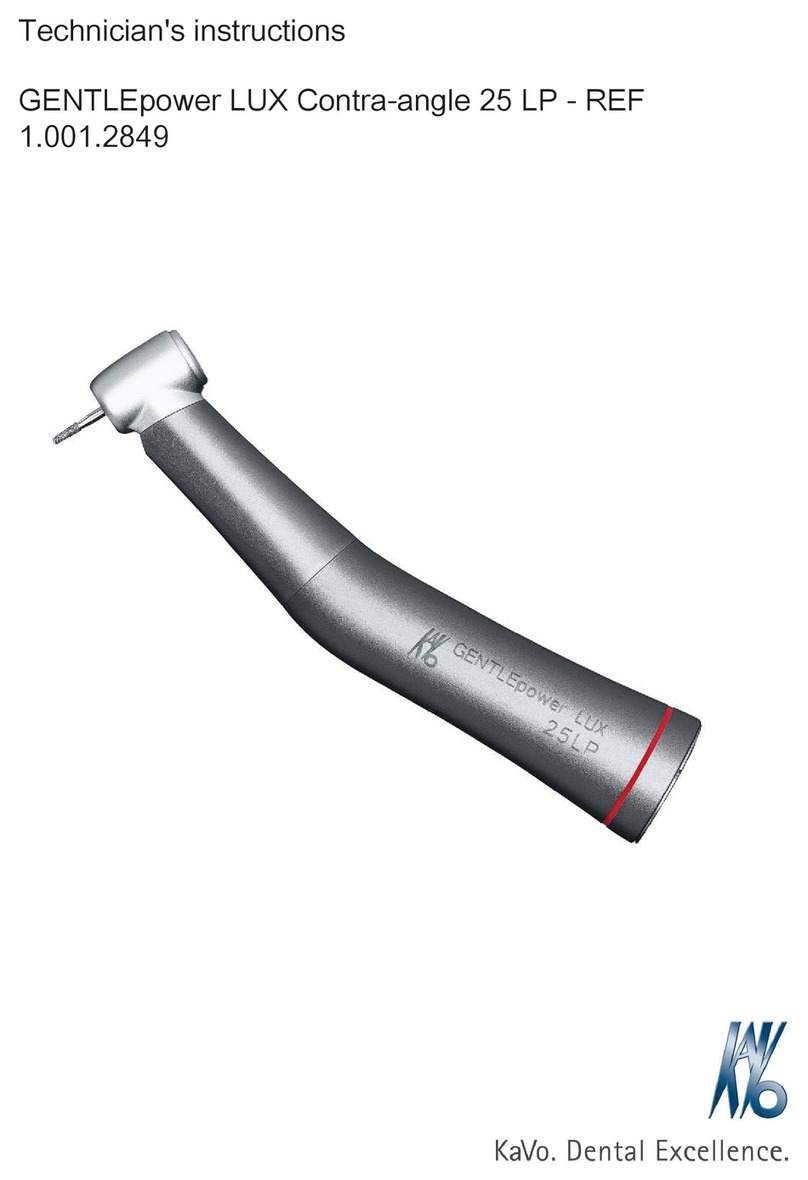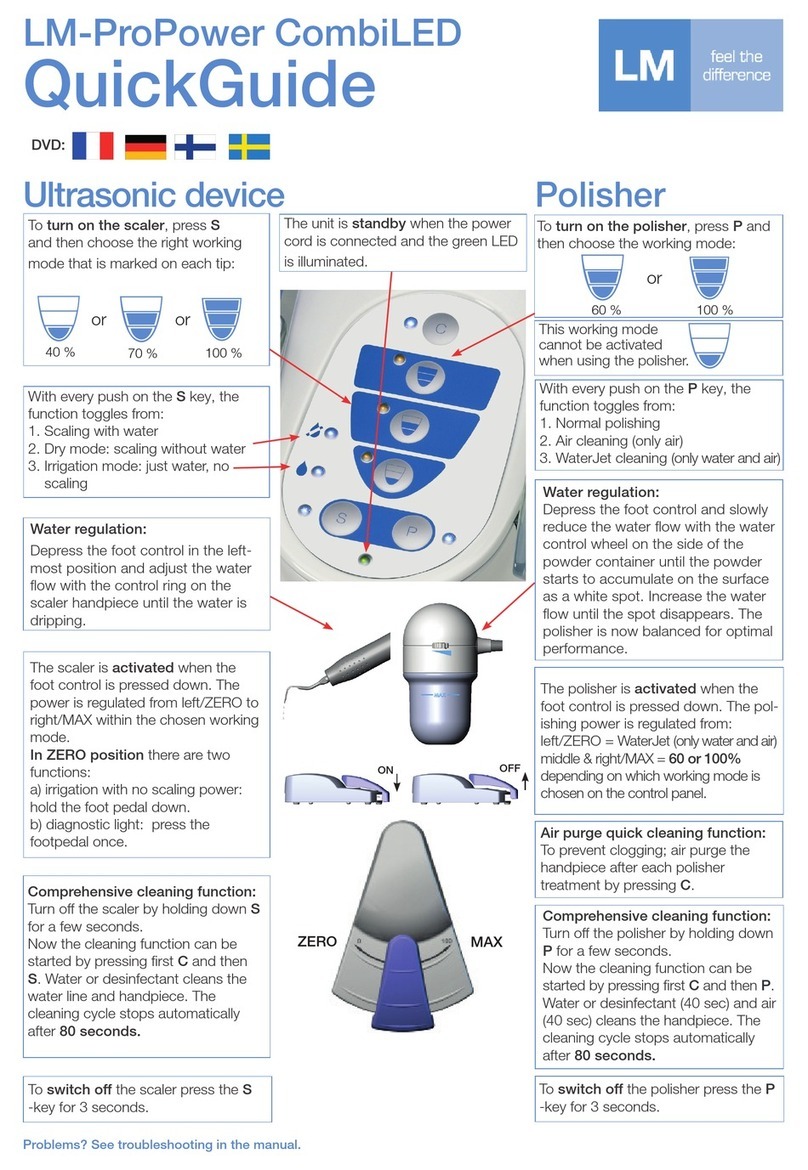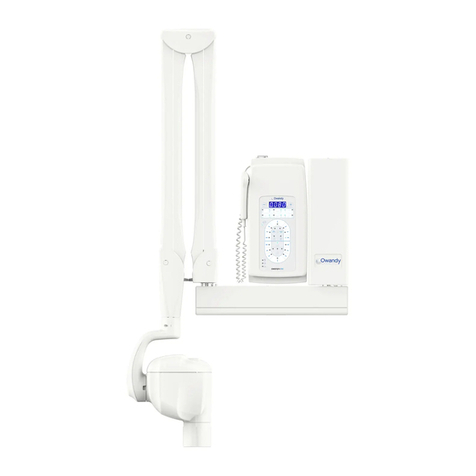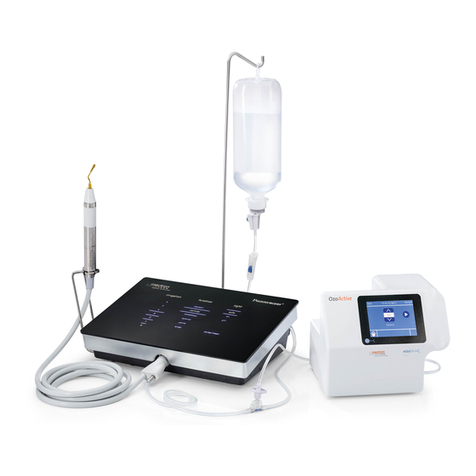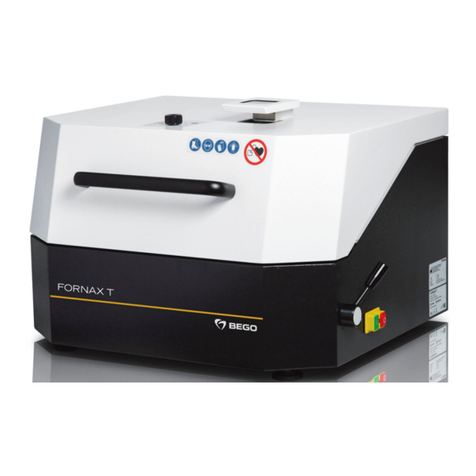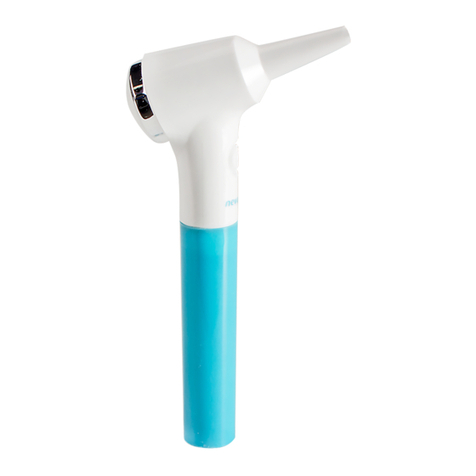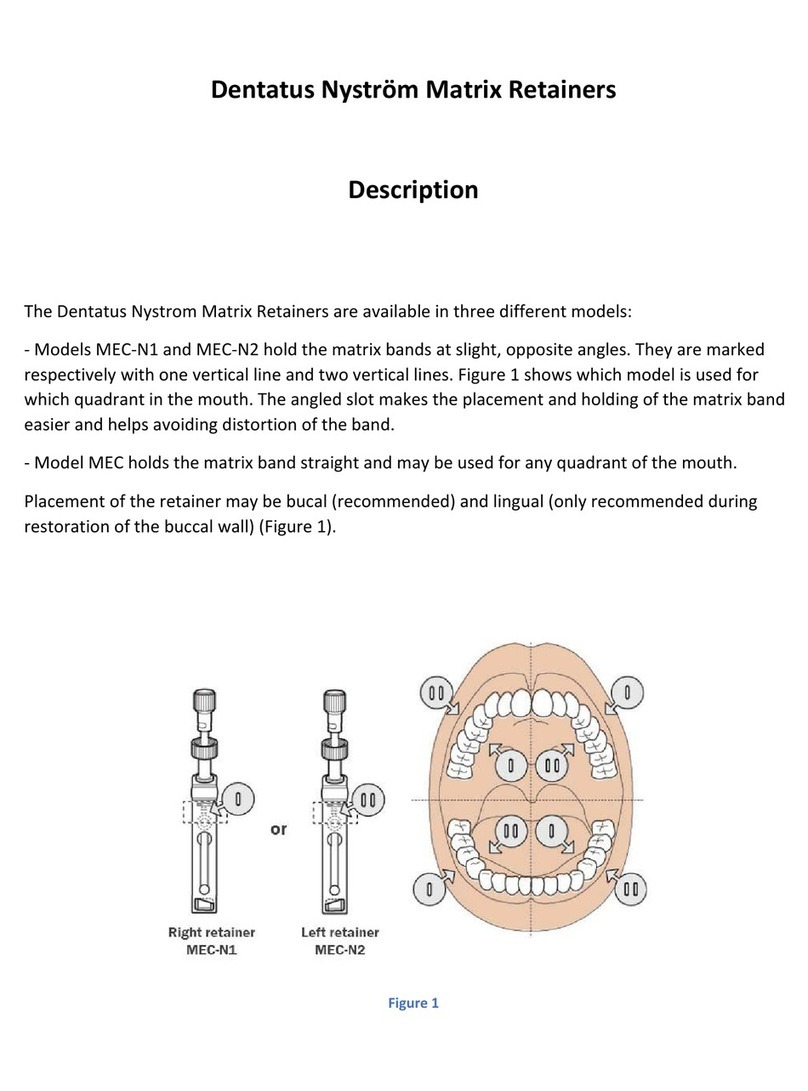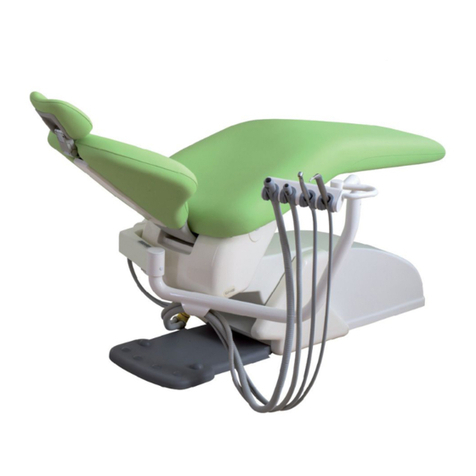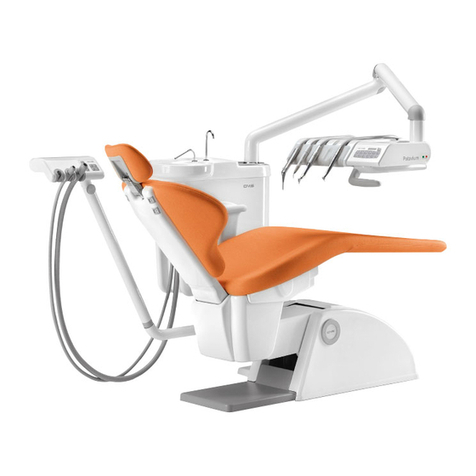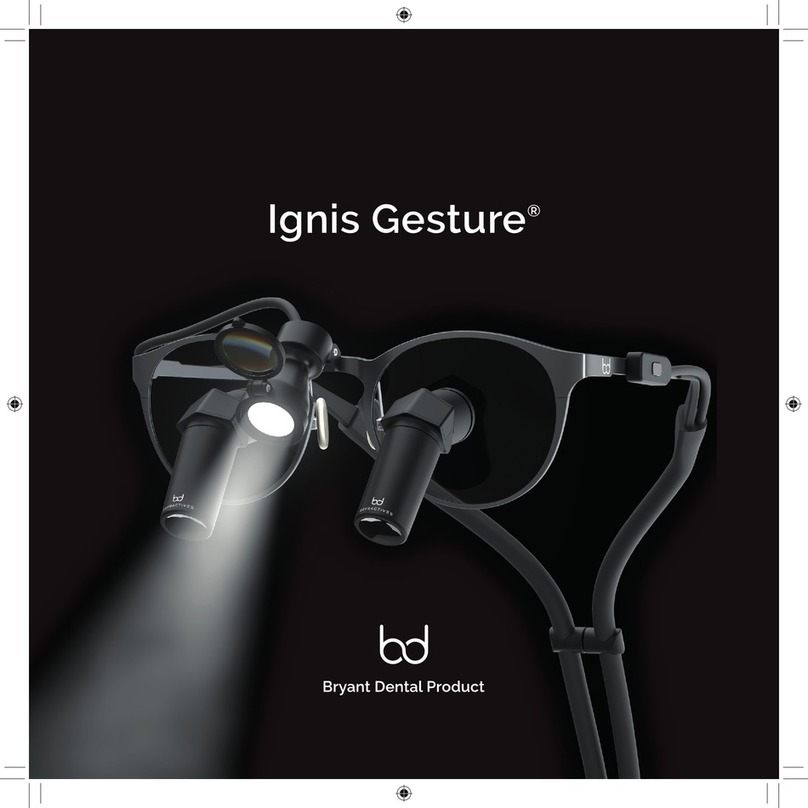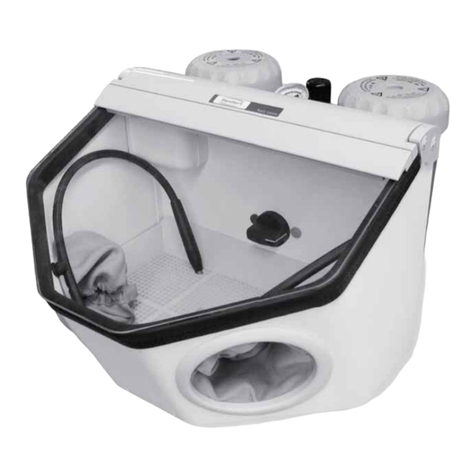NEOLIX Neoniti C1 n 25/.12 User manual

ENGLISH
INSTRUCTION MANUAL
To be stored with care
1- Indication
For dental use only, Neoniti files are intended for treating root canals as part of a conservative treatment and must be used by qualified
healthcare professionals:
Neoniti C1 n°25/.12 : orifice opener for flaring the coronal third of a canal
Neoniti GPS n°15/.03 (white): pathfinder to realise the glide path and check the canal patency
Neoniti A1 n°25/.06 (red): shaping file for the mesial and apical parts of a canal
Neoniti A1 n°20/.06 (yellow): shaping file for difficult canals (calcified, narrow, curved)
Neoniti A1 n°40/.04 (black): finishing file for a large canal
2- Precautions for use
•The only known adverse effect is the accidental breakage of Neoniti file, usually in case of inappropriate use. This risk can be reduced
by taking the following precautions:
- Evaluate the difficulty of the clinical case with a pre-operative radiograph.
- Always work in a root canal that has been permeabilized by a suitable pathfinder.
- Use the files in their strict intended use, with a contra-angle equipped with a torque control.
- Use a moderate force during the canal penetration.
- Thoroughly and regularly irrigate (every 3 passes).
- Regularly wipe the file (every 3 passes).
- Discard the instruments after use.
•Before use, please keep Neoniti files in their original packaging in a clean, and dry place and away from light.
•Neoniti files are provided non-sterile and are intended to be cleaned, disinfected and sterilised by the dentist before use.
•Do not sterilise more than 5 times.
•Do not use if the file or his packaging is damaged, or not correctly identified.
•The file of the right size must be selected by checking the ISO colour of the silicone stop, except for Neoniti C1 (no silicone stop).
•It is advised to use a dental dam to prevent accidental ingestion of instrument.
•Hydrogen peroxide damages the Nickel-Titanium files, avoid contact with Neoniti files.
•At the stage of cleaning and disinfection of the instruments, do not leave them immersed into a sodium hypochlorite solution.
•Avoid introducing Neoniti C1 too deep into the root canal.
•Wear appropriate personal protective equipment (gloves, glasses).
3- Warning
Neoniti files have a blade made of Nickel-Titanium alloy, do not use in case of known allergic sensitivity of the patient.
Neoniti files are intended for a single patient use. Repeated uses and sterilisations may unwind or affect the file, therefore it may weaken the
file. The use of a weakened file may lead to its separation.
4- Operative procedure
Use Neoniti files in continuous rotation at a constant speed between 300 and 500 rpm and a torque limit of up to 1.5 N. cm.
Endodontic treatment
•1st step
Realise the glide path and check the canal patency by using a GPS file or, by default, a K file of size #06, 08, 10 and then 15.
•2nd step
Neoniti C1 is introduced into the canal at a maximum depth of 5mm.
The work is performed using a wall circumferential brushing motion onto the opposite wall of the curvature to widen and relocate the
canal orifice, aiming to ease the progression of the following instruments until the apex. Work under thorough and frequent irrigation.
•3rd step
Measure the working length (WL) as soon as possible, with an apex locator and/or a periapical radiograph.
•4th step
- Neoniti A1 is carefully introduced into the canal by 2-3 pecking and upward circumferential brushing motions from the bottom up.
- Rinse, check the canal patency with a GPS file or otherwise by using a K file #10 or 15.
- Clean the Neoniti A1 flutes with a sodium hypochlorite swab.
- Reroute Neoniti A1. If the WL can be achieved, only use pecking motions in the last 3-4mm at the apex.
- Rinse and check the patency.
- Clean Neoniti A1.
- Repeat the above sequence as long as the WL is not reached.
- Work under thorough and frequent irrigation.
Particular cases
- The difficult, narrow or curved canals can be more appropriately treated using Neoniti A1 size 20.
- The larger canals can be completed using the Neoniti A1 size 40 finishing file.
www.neolix.eu
Depth
marks
File length - mm
18 mm X X X
19 mm X X X
20 mm X X X
22 mm X X
24 mm X

Endodontic retreatment
Neoniti files should be used for endodontic retreatment only if the previous filling material was soft enough (e.g. gutta percha). Insert
Neoniti C1 into the gutta percha, while using an appropriate solvent for filling resin,if needed, and continue the action with Neoniti A1
by using the same procedure as for an endodontic treatment.
5- Cleaning, disinfection and sterilisation of instruments before use (EN ISO 17664 standard)
For pre-cleaning and cleaning/disinfection steps, use approved products (CE certified, FDA approved or VAH/DGHM list) for rotary
instruments made of Nickel-Titanium.
Steps
Instructions
Pr
ecautions
Pre-cleaning
Carry out pre-cleaning in a suitable container
by soaking the instruments in a disinfectant
solution.
Rinse them thoroughly with running water.
Use a cleaning/disinfectant solution that complies with
the manufacturer's instructions (concentration, contact
duration and water quality appropriate for the products).
Automatic
method
Cleaning
Disinfection
Rinsing
Drying
Place the files on a suitable rack and in a
disinfectant washer device.
Perform one cleaning cycle and then one
disinfection cycle (at least 93°C for 3 minutes:
A0 > 3000).
Dry with hot air (at least 70°C for 10 minutes).
Use a cleaning/disinfectant solution that complies with
the manufacturer's instructions (concentration, contact
duration and water quality appropriate for the products).
The disinfectant washer device must meet EN ISO
15883-1 standard and be used in accordance with the
device manufacturer's recommendations (load
configuration, positioning, connection, accessories,
pressure, temperature limits).
Manual
method
Cleaning
Disinfection
Place the instruments on a suitable rack.
Immerse them in a container containing the
cleaning/disinfectant solution and then place
the container in an ultrasonic bath.
Use a cleaning/disinfectant solution that complies with
the manufacturer's instructions (concentration, contact
duration and water quality appropriate for the products).
The ultrasonic bath must be used in accordance with
the manufacturer's recommendations (load
configuration, positioning, connection, accessories,
pressure, temperature limits).
Rinsing Rinse them thoroughly with demineralised
water for at least 1 minute.
Drying Dry the files using a single-use lint-free cloth
or compressed air. Check that the instruments are completely dry.
Packing Immediately place the instruments (on their
rack) into a sterilisation pouch.
Seal the pouch in accordance with the manufacturer's
recommendations. The pouch must meet EN ISO
11607-1 standard.
Sterilization
Place the pouches in an autoclave.
Sterilise them in accordance with applicable
national requirements. Recommended
sterilisation: 134°C for 18 minutes.
Check that the sterilisation cycle was correctly
performed.
The autoclave must meet EN 13060 (type B) and EN
ISO 17665-1 standards (load configuration, rack and
contents according to manufacturer's instructions).
Use and maintain the autoclave according to the
manufacturer's instructions.
Minimum parameters: 134°C for 3 minutes.
Minimum drying time: 20 minutes.
Storage Store the pouches containing the sterilised
instruments in a warm, clean and dry place.
Before use, check the integrity of the pouches and the
sterilization expiration date.
Cleaning agents/disinfectants used to validate this protocol:
•Pre-cleaning and cleaning/disinfection (manual method): Dentasept® Special Rotative.
•Cleaning/disinfection (automatic method): neodisher® Mediclean forte and Mediklar special.
6- Elimination
The used files must be discarded in accordance with the local regulation by following a method specific to infectious risk healthcare wastage.
7- Symbols
Read the instruction
manual Do not re-use Address of the
manufacturer
Nickel-Titanium
Sterilizable in an autoclave
at 134°C Non-sterile
Batch number Product reference
Do not use if the package
is damaged
Clockwise rotation and max.
speed (rpm)
CE mark
Number of files per
packaging
NEOLIX SAS
11 av. Raoul Vadepied - Châtres-la-Forêt
FR-53600 EVRON (France)
@ : neolix@neolix.eu - +33-2-5374-5007
Class IIa medical device
Year of CE marking: 2013
Document reference: NI-NEONITI-01 EN (K)
L
ast update:
June
2020
This manual suits for next models
4
Table of contents

